From the analog website this switchable gain amplifier is shown. It uses a second switch S2 to reduce gain error from S1's on resistance. Why is this the case?
3 Answers
A single pole dual throw (SPDT) switch would need to be in series with the two feedback paths (with the common point being the op-amp output,) so its on-resistance would become part of the feedback path, thus slightly increasing the gain value with respect to the nominal value.
Note how this is no longer the case when using the dual pole switch.
Still, even with a SPDT switch, matters could be improved by placing it on the input end of the feedback path instead of the output. The reason is that its common terminal voltage would be constant and therefore its on-resistance would be at least constant (assuming the article speaks about CMOS analog switches,) so the effect of the switch could be tentatively calibrated.
All switches have resistance, and analog electronic switches can have quite significant resistance. Worse yet, that resistance will vary significantly from unit-to-unit, with temperature and with the common-mode voltage on the switch.
By using two switches (and assuming that the loading of the output is minimal, say into a buffer) the effects of switch resistance can be completely eliminated. In the below simulation you can see the effect.

simulate this circuit – Schematic created using CircuitLab
Ideally the output voltage will be 6.000 V with the switches in the shown position, and 2.00V with the switches in the opposite position.
R2 and R5 represent switch resistances. You can see that the error is reduced from 1.3% (6.00V out) and 4% (2.00V out) to essentially zero.
- 376,485
- 21
- 320
- 842
Because the op-amp drives its output until the current through Rf2 is exactly the same as the photodiode output (so that there is no net current into its '-' input). That's what op-amps do. At that point, the voltage at Rf2 is exactly correct (photodiode current times Rf2), even if the op-amp has to drive its output a bit further to make up for the extra resistance in SW1. So, the output of the op-amp swing more than it would if it were connected directly to Rf2, but the voltage on Rf2 swings exactly to the correct voltage, whether it is connected directly to the op-amp output or through SW1.
Therefore, the voltage we want is not the op-amp input (which is excessive) but the one on Rf2. How do we get it? We get it through SW2, which selects the voltage on Rf2 when we're using Rf2 for feedback, or selects the voltage on Rf1 when we're using Rf1 for feedback.
- 16,164
- 4
- 33
- 62


